Here's the money shot;
The hoist goes as follows;
The yellow tow strap seen running along the ramp leads from the base of
the lathe's tailstock-end legs, back along both sides to the chain
host, located off the right edge of the picture. It runs low so
as the lathe pitches, it won't be able to slip downwards since the
straps will be pulled down over the fulcrum as well.
The comealong leads from the chain hoist to the base of the
headstock-end stand It allows me to control the pitch and ease the
lathe over the edge once the tipping point is reached.
The rope is there because I was nervous.
The pressure treated lumber was unsatisfactory in this application, it
offered a lot of friction even after I applied transmission fluid to
the sliding surfaces. The stiction was bad enough that the lathe
wouldn't start sliding with the pitch seen below. We had to slack
the hoist an inch or two, then shove the uphill end of the lathe to get
it moving.
The tow strap tended to get snagged between the ramp and the lathe
sled, adding a couple 1x2 cleats in strategic spots would have
prevented it.
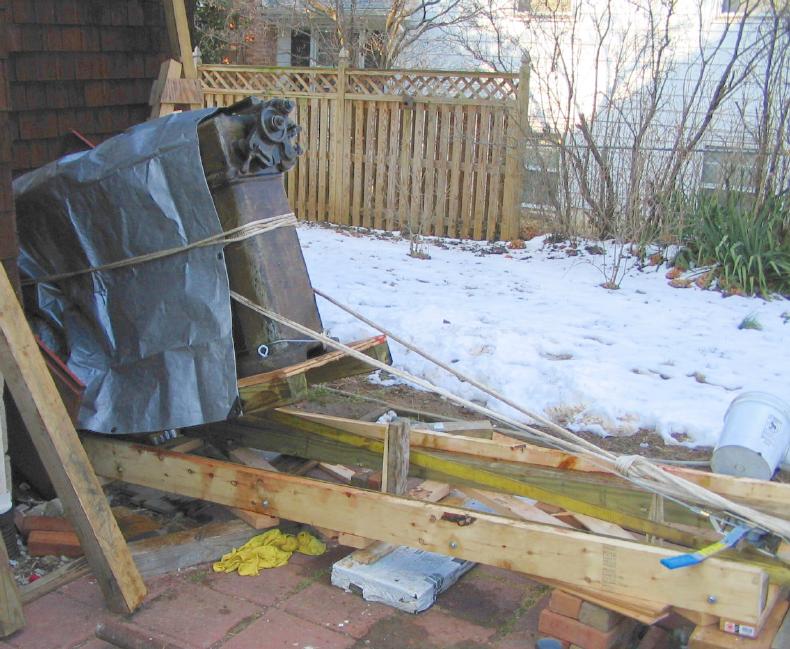
This is the chain hoist end of the rigging. Its very much easier
to pay out slack with the hoist than with a comealong. The
operation was somewhat clumsy in this orientation, but once the load
came on and lifted the hoist off the ground, the fall stopped jamming
and it worked fine.
I took care to arrange the rigging so if something let go, the works
could stream past on the way into the basement, but not taking me with
it.
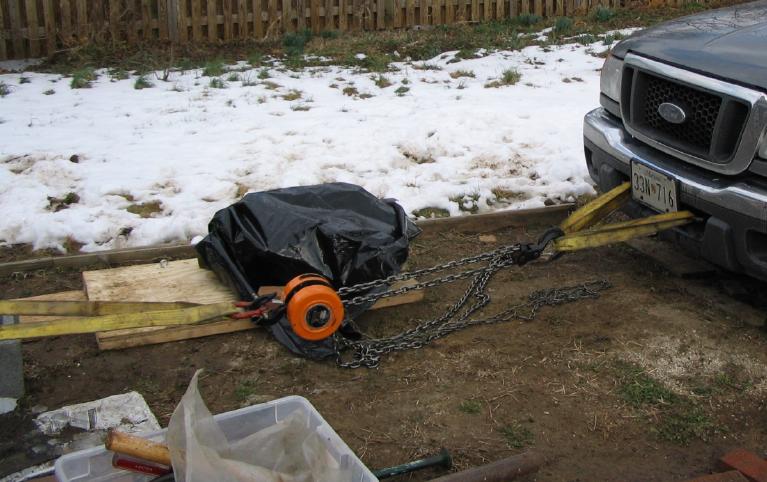
All down, safe and sound. The bed and carriage below seem to
weigh about 1200 lbs, perhaps a little less. The handles made it
through the basement doorway with less than 1" to spare.
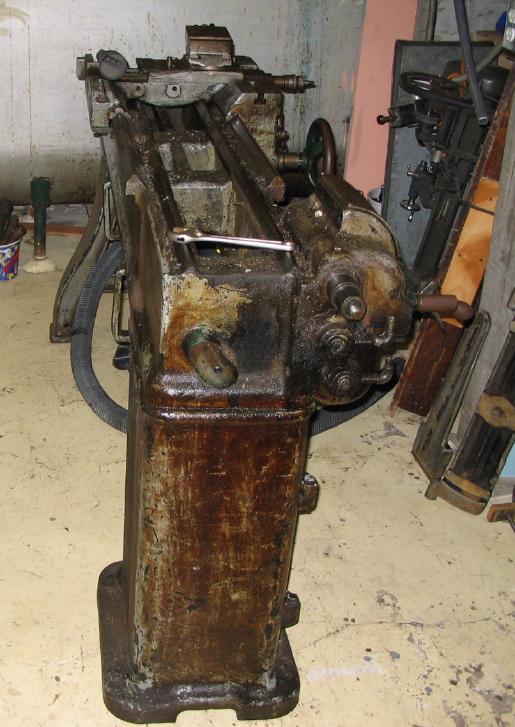
Next morning, the forcast was for more snow- of course- so I started
early with the headstock halves.
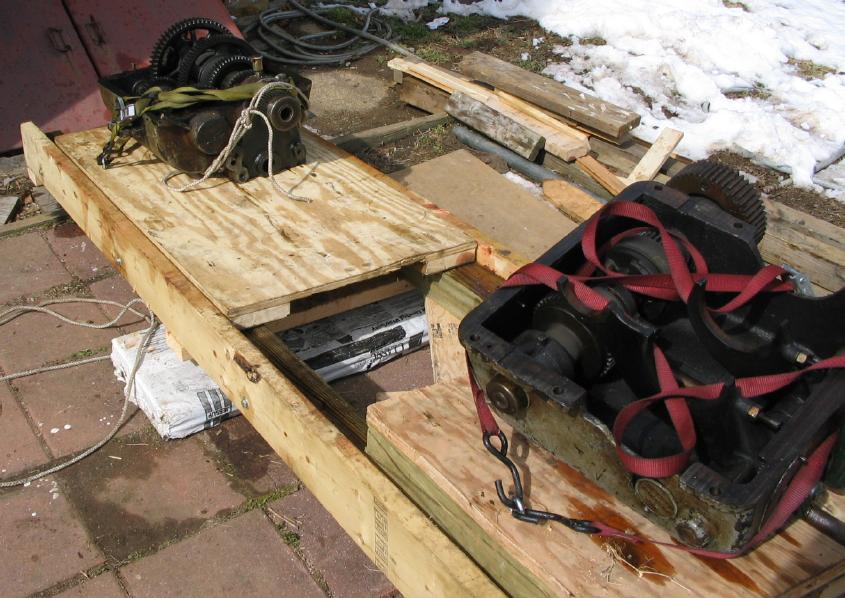
These are nice and light, 100 or so and maybe 300 respectively, so
moving them was easy.
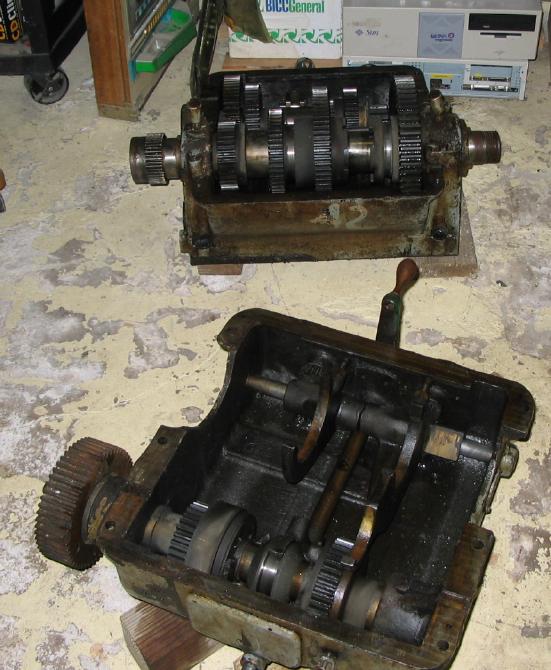
;;; eof




